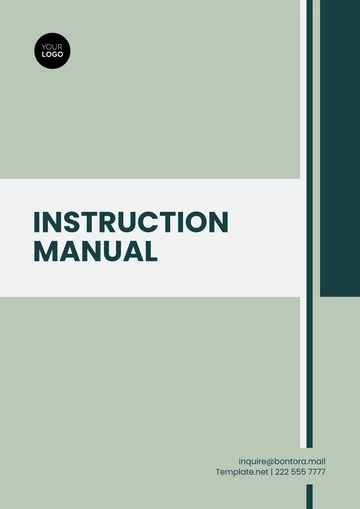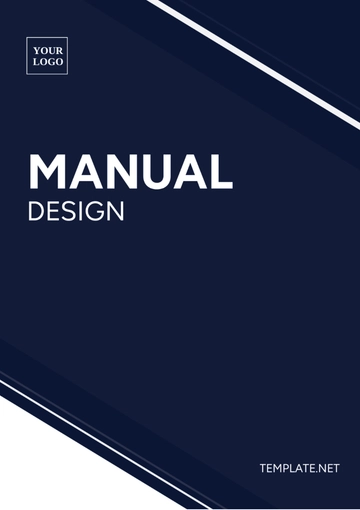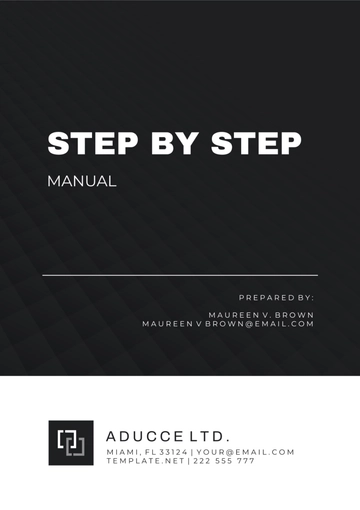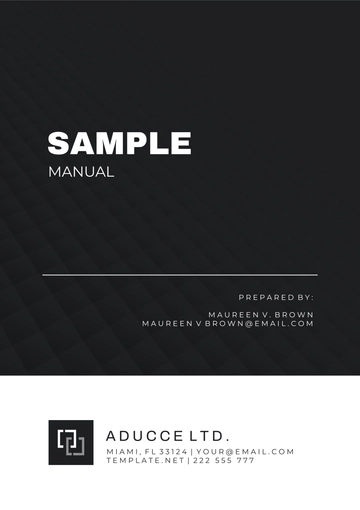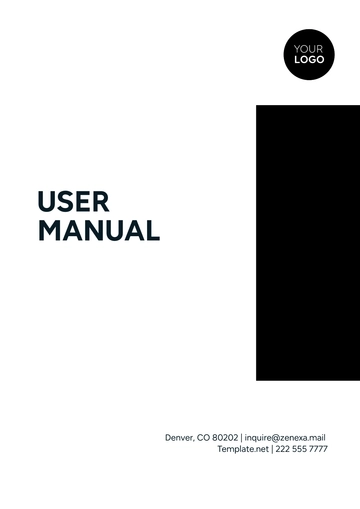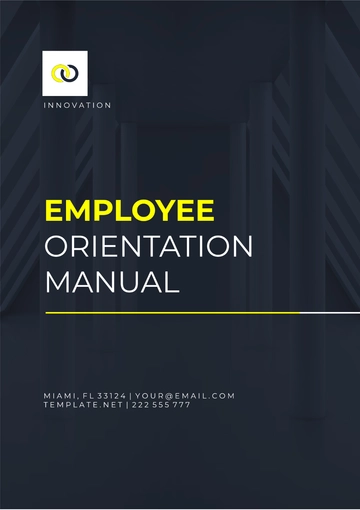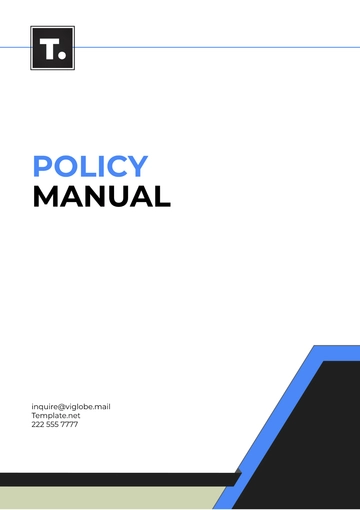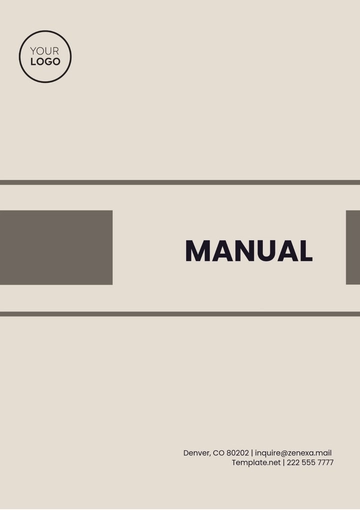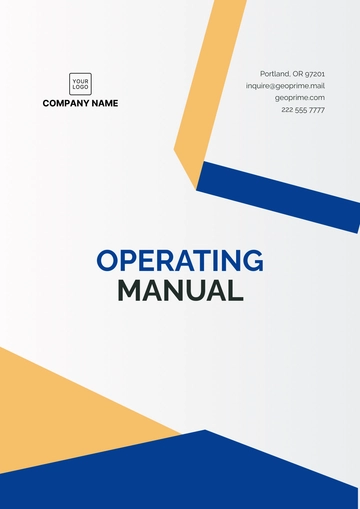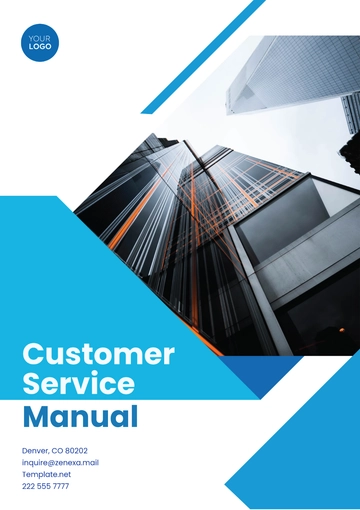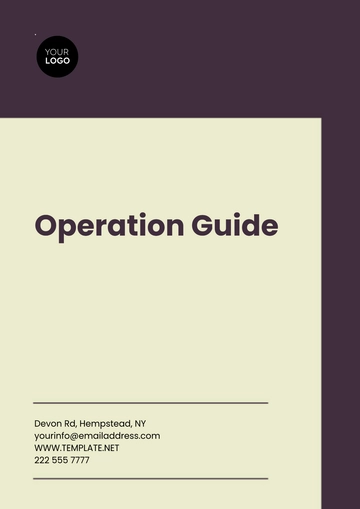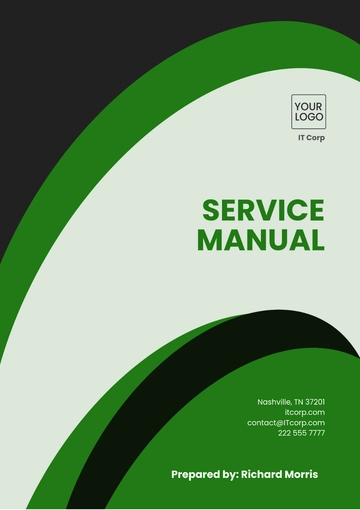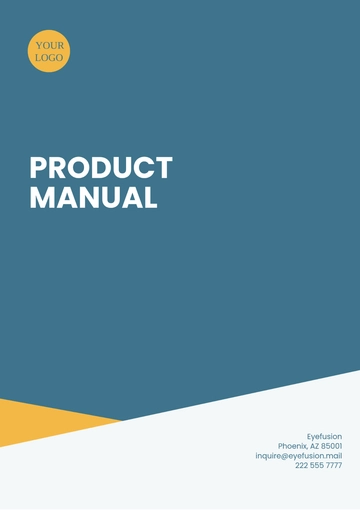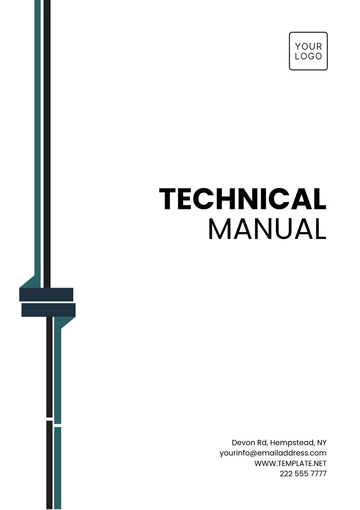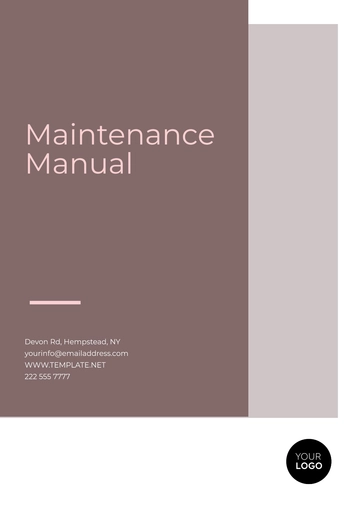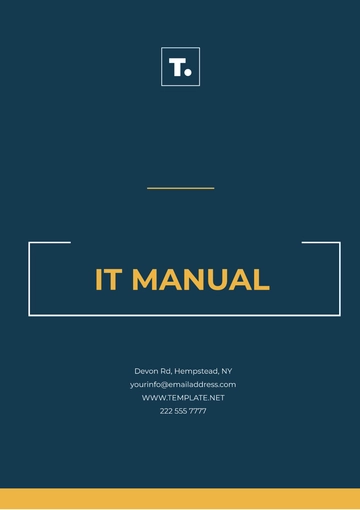Free Marketing Quarterly Budget Review Manual

1. Introduction
A. Welcoming Message
Welcome to [Your Company Name]'s Marketing Quarterly Budget Review Manual. We have designed this document to be a comprehensive guide for our team as we embark on this quarter's marketing journey. Within these pages, you will find a strategic blueprint tailored to enhance our company's presence in the manufacturing sector, solidify customer relationships, and drive our business to unprecedented growth.
B. Purpose of the Manual
The purpose of this manual is threefold. Firstly, it serves to align our marketing strategies with our overarching business objectives, ensuring that every dollar spent is a step towards our goals. Secondly, it aims to provide a clear and actionable plan that details the allocation and management of our $[000,000] quarterly marketing budget. Lastly, it acts as a living document to record our progress, learn from our outcomes, and adjust our tactics in real-time to optimize our market position.
C. Overview of [Your Company Name] and Its Market Position
[Your Company Name] has established itself as a key player in the manufacturing industry with a commitment to excellence, innovation, and customer satisfaction. Our reputation for delivering high-quality products has positioned us as a leader in our field. However, the market is ever-evolving, and staying ahead requires not just meeting but anticipating customer needs and preferences. With this manual, we aim to deepen our market penetration and claim a larger share of the spotlight in a competitive environment. By leveraging targeted marketing initiatives, we will not only reinforce our brand but also lay the groundwork for the introduction of new product lines and services.
2. Marketing Objectives for the Quarter
To steer [Your Company Name] towards our ambitious goals, we have delineated clear objectives for this quarter. Each objective has been carefully crafted with our overall budget in mind, ensuring that we are not only strategic but also fiscally responsible in our approach to growth and market dominance.
A. Increase Market Share by [0]%
A primary objective is to bolster our market share by [0]% over the next quarter. This target is aggressive but achievable, reflecting our commitment to assertive expansion. To support this objective, we have allocated $[00,000], or [00]% of our total budget, towards initiatives specifically designed to capture additional market segments and increase our customer base.
B. Grow Brand Awareness in Key Markets by [00]%
We aim to amplify brand awareness in our key markets by [00]%. This heightened recognition will serve as the bedrock for sustained growth and customer engagement. A budget of $[00,000], representing [00]% of our total budget, will be channeled to campaigns that increase our visibility and highlight our competitive edge.
C. Enhance Customer Engagement and Loyalty by 20%
Enhancing customer engagement and loyalty is crucial. We are setting a target to boost engagement metrics by [00]%. We have designated $[00,000], or [00]% of our budget, to revamp our customer relationship management strategies, foster loyalty programs, and create personalized customer experiences.
D. Introduce a New Product Line to the Market
Introducing a new product line is a bold move that speaks to our innovative spirit. We have set aside $[00,000], which is [00]% of our budget, for the promotion, launch events, and initial market penetration efforts of our new product line. These funds will ensure the product debut is impactful and reaches the optimal audience.
E. Drive 30% More Traffic to the Company Website
A surge in website traffic is indicative of successful outreach and engagement strategies. We aim to drive [00]% more traffic to our company's website through a mix of SEO, content marketing, and digital advertising. To achieve this, $[00,000], or [00]% of our marketing budget, will be dedicated to online platforms, ensuring our digital presence is robust and effective.
3. Strategic Marketing Plan Overview
The foundation of our quarterly success lies within a well-constructed Strategic Marketing Plan. This plan is a roadmap that not only outlines our destination but also the paths we will take to reach it. We have crafted this overview to align seamlessly with [Your Company Name]'s broader objectives, ensuring that every marketing effort is a step toward our ultimate business goals.
A. Summary of Strategic Marketing Initiatives
Our strategic marketing initiatives are the engines of progress for [Your Company Name]. This quarter, we are focusing on digital transformation, customer-centric campaigns, and market expansion through strategic partnerships. A blend of traditional and digital marketing tactics has empowered these initiatives, each chosen for its proven impact and ROI potential. We are committed to implementing innovative strategies that engage our target audience, enhance brand loyalty, and drive sales.
B. Alignment with Overall Business Goals
We have aligned each of the marketing initiatives with [Your Company Name]'s overall business goals: to increase profitability, sustain competitive advantage, and foster long-term customer relationships. We understand that marketing is not an island but a bridge that connects the market's needs with our company's solutions. Our plan includes aggressive sales targets, market share expansion, and customer acquisition and retention strategies, all designed to work in concert with our company's growth trajectory.
C. Key Performance Indicators (KPIs) for Success Measurement
To navigate our journey effectively, we have established Key Performance Indicators (KPIs) that will measure our success at each checkpoint. These KPIs include lead conversion rates, customer engagement levels, website traffic, social media reach, and ROI on marketing campaigns. We will continuously monitor these KPIs to ensure that our marketing activities will yield the desired results and make data-driven decisions to optimize our approach as needed.
4. Budget Allocation
Total Marketing Budget for the Quarter: $[000,000] | |
Budget Allocation Breakdown | |
Digital Advertising | $75,000 |
Management | |
Content Creation and Market Research | |
Public Relations | |
Trade Shows and Events | |
Sales Support Materials | |
Marketing Staff and Administration | |
5. Execution Plan
The Execution Plan is the operational backbone of our Strategic Marketing Plan. It translates our strategic vision into actionable steps, outlining how we will implement our initiatives, who will carry them out, and the timeline for execution. It is a commitment to disciplined action, ensuring that our strategies are not just ideas but realities in the making.
A. Timeline of Marketing Activities
We initiate our quarter with a structured timeline that details the launch, duration, and completion of each marketing activity. We have scheduled key campaigns to capitalize on market trends and seasonal peaks. For instance, our digital advertising push will commence in the first month, aiming to quickly amplify our market presence. We have slated the introduction of the new product line for mid-quarter to align with industry expos and maximize exposure. We have crafted the timeline to ensure that activities do not overlap but rather complement each other, allowing for a clear analysis of each campaign's effectiveness.
B. Roles and Responsibilities
Clarity in roles and responsibilities is crucial for a seamless operation. We have assigned each member of our marketing team to specific tasks that play to their strengths and areas of expertise. The Digital Marketing Manager will oversee online campaigns, while the PR Coordinator will handle media relations and event planning. The Content Team will produce and manage our content calendar, and the Market Research Analyst will provide ongoing insights to inform our strategies. Clear accountability ensures that each team member is not only aware of what we expect of them but also understands the importance of their contribution to the larger goals.
C. Vendor and Agency Management
External vendors and agencies are often pivotal in executing parts of our marketing strategy, especially in areas requiring specialized expertise. We will engage with these partners based on a stringent selection process that evaluates their strategic alignment with our objectives, past performance, and cost-effectiveness. Contracts with vendors and agencies will outline deliverables, deadlines, and performance metrics, with regular reviews to ensure they are meeting our high standards. Effective management of these relationships is key to extending our capabilities and achieving our marketing objectives.
6. Monitoring and Reporting
In the realm of marketing, success is not only about execution but also about measurement and responsiveness. The Monitoring and Reporting section of this manual lays out the protocols for tracking our marketing activities and assessing their performance against our strategic goals. This continuous process ensures that we maintain agility and effectiveness throughout our marketing campaigns.
A. Process for Tracking Expenses Against Budget
To ensure fiscal discipline and strategic spending, [Your Company Name] employs a rigorous process for tracking expenses against our budget. Each marketing activity is associated with a cost center and a designated budget code. As these activities incur expenses, they are recorded in real-time against these codes, providing an immediate view of budgetary status. This granular tracking enables us to pinpoint areas of over or under-spending, allowing for swift budgetary adjustments. Our financial team will conduct bi-weekly reviews to reconcile expenses and ensure adherence to the budget.
B. Frequency and Format of Performance Report
Performance reports are the dashboards through which we visualize our progress. We have generated these reports monthly and include key metrics such as campaign reach, lead generation, conversion rates, and return on investment. The company has standardized the format to ensure comparability across periods and campaigns. Each report includes both quantitative data and qualitative analysis, providing a comprehensive view of our marketing performance. By maintaining a regular reporting schedule, we keep all stakeholders informed and engaged with our marketing progress.
C. Criteria for Adjusting Budget Allocation
The ability to adapt our budget in response to performance is key to maintaining marketing effectiveness. [Your Company Name] has established clear criteria for adjusting budget allocation. These include the achievement of KPIs, shifts in market conditions, and the emergence of new opportunities or challenges. If a particular strategy outperforms expectations, we may reallocate funds to capitalize on the momentum. Conversely, we may scale back or restructure underperforming initiatives. Decisions on budget reallocation are made during monthly budget review meetings, ensuring that adjustments are data-driven and aligned with our strategic objectives.
7. Future Planning and Strategic Adjustments
In a landscape that is constantly evolving, the present quarter will not confine [Your Company Name]'s marketing endeavors. Future Planning and Strategic Adjustments is a section dedicated to ensuring our marketing agility and our capacity for long-term success.
Anticipating Market Trends and Consumer Behavior
We actively monitor market trends and consumer behaviors to anticipate shifts that could impact our marketing strategy. We have tasked our marketing team with staying ahead of industry innovations, consumer sentiment, and competitive movements. By maintaining an ongoing analysis of market data, we can pivot our strategies to maintain relevance and effectiveness. For this purpose, we allocate a portion of our budget to research and development, ensuring that we're not only participants but also leaders in market evolution.
A. Developing a Marketing Innovation Pipeline
[Your Company Name] believes in the power of innovation not just in our products but also in our marketing efforts. We establish a marketing innovation pipeline that allows us to test new ideas, from cutting-edge digital marketing techniques to groundbreaking customer engagement programs. Cross-departmental brainstorming sessions and a ‘’test-and-learn’’ approach have fueled this pipeline, where we can easily pilot, analyze, and scale novel concepts accordingly.
B. Planning for Long-Term Brand Development
While our quarterly goals are critical, they are steps towards larger ambitions. We lay the groundwork for long-term brand development, ensuring that each quarterly plan contributes to the building of a robust and admired brand. This involves nurturing brand equity, establishing thought leadership, and fostering a community around our brand. We have designed our marketing efforts to create not just immediate returns but lasting brand value.
C. Regular Strategic Reviews and Feedback Loops
A mechanism for regular strategic reviews is in place to evaluate the effectiveness of our marketing strategies. We implement feedback loops that incorporate insights from all levels of the marketing team, sales data, and customer feedback. These reviews are scheduled monthly, with a comprehensive quarterly review to ensure we are on track to meet our yearly goals. This process ensures that our marketing strategy remains dynamic and responsive to both our successes and areas for improvement.
8. Conclusion
As we draw the final strokes on our Marketing Quarterly Budget Review Manual, it's time to reflect on the journey ahead and the role this document plays in it. The conclusion is not merely an end but a call to action—a reiteration of our commitment to the goals we've set and the strategies we've outlined.
C. Recap of Objectives and Budget Allocation
We commenced with a clear vision: to strengthen [Your Company Name]'s market position through calculated, creative, and customer-focused marketing strategies. We have set our objectives with ambition and precision: increasing market share, enhancing brand awareness, fostering customer loyalty, launching new products, and driving significant digital traffic. Each objective has been supported by a carefully planned budget allocation, ensuring every dollar is an investment towards our defined targets. We conclude with a budget that is not just numbers on a spreadsheet but a delineation of our roadmap for growth.
B. Encouragement for Team Collaboration and Innovation
This manual is a testament to our collaborative ethos at [Your Company Name]. It serves as a reminder that while individual brilliance is valued, collective effort is paramount. We encourage each team member to bring their unique ideas and perspectives to the table. Innovation is not just encouraged—we expect it. As we implement this plan, we look forward to the creativity and insight that will inevitably arise from our team's collaboration, and we remain open to adapting our strategies to capture these opportunities.
C. Closing Remarks from the Marketing Director
In closing, as the Marketing Director of [Your Company Name], I extend my gratitude to each member of our team for your dedication and expertise. The forthcoming quarter poses both challenges and opportunities and with this manual as our guide, I am confident in our ability to not only meet our objectives but to exceed them. Let's approach the coming months with tenacity, passion, and a relentless pursuit of excellence. Together, we will continue to propel [Your Company Name] to new heights in the manufacturing industry.
Marketing Templates @ Template.net
- 100% Customizable, free editor
- Access 1 Million+ Templates, photo’s & graphics
- Download or share as a template
- Click and replace photos, graphics, text, backgrounds
- Resize, crop, AI write & more
- Access advanced editor
Discover unparalleled ease in managing your quarterly marketing budgets with Template.net's Marketing Quarterly Budget Review Manual Template. Crafted for efficiency, it's fully editable and customizable to suit your unique needs. Harness the power of our Ai Editor Tool to effortlessly tailor your budget reviews. Elevate your financial strategies today with this indispensable resource.
